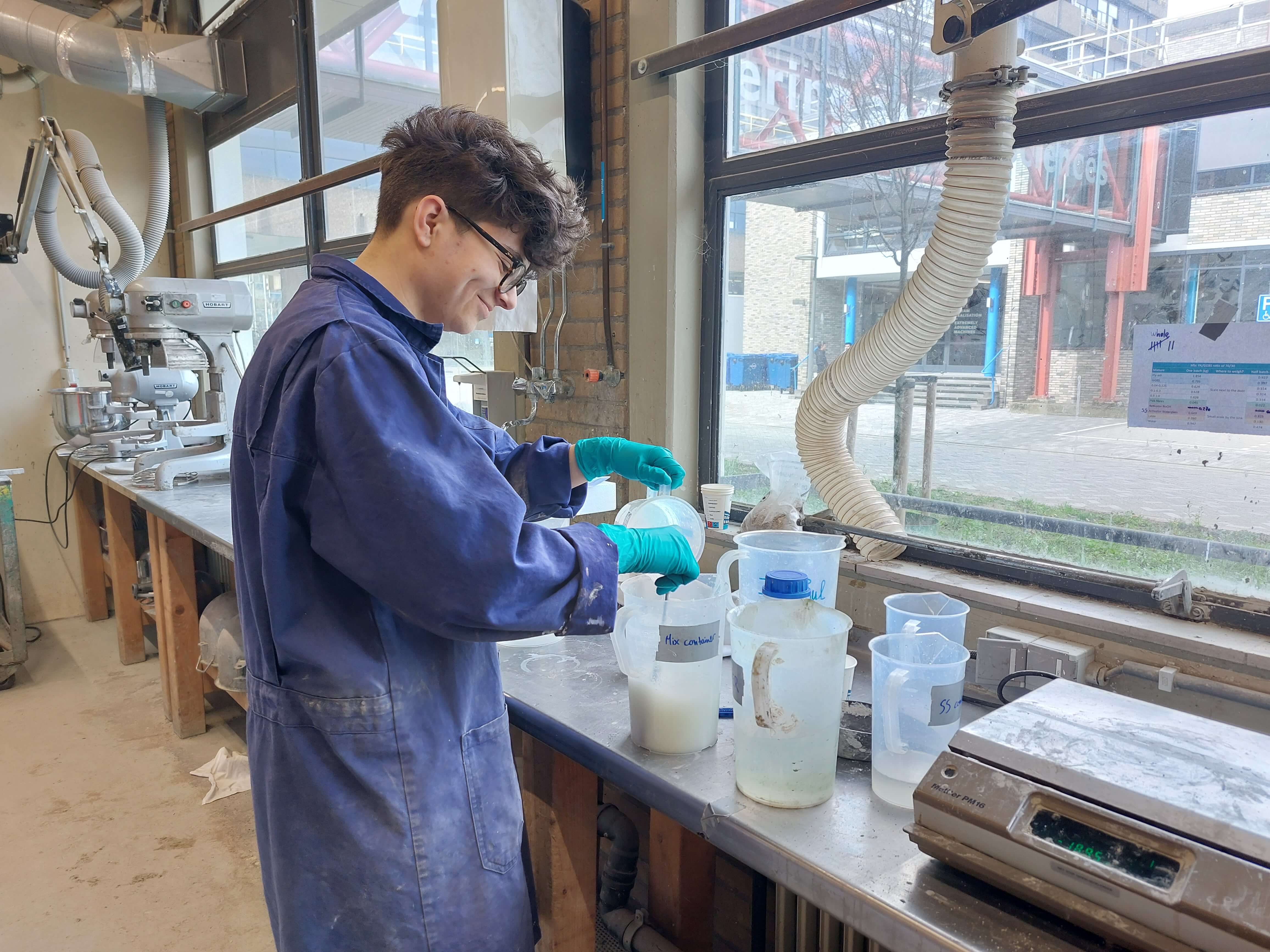The annual Concrete Canoe Competition allows students from across the globe to see who has come up with the lightest, most durable, or most innovative canoe – made from concrete. Jasmijn, whose master specialisation is Construction Materials, was the obvious person to take care of the perfect concrete mix. With her passion for developing more sustainable building materials, she created a special mix. Together with the team she built a sustainable canoe ready for racing action...
Why did you decide to enter the Concrete Canoe Competition?
I had known about the competition for a long time. My primary school invited a group of students from Twente University to come and talk to us about it so the idea that you can make a working canoe from concrete took root quite early. U-BASE, the student association of the Structural Engineering and Construction Materials MSc tracks, also played a big role. I became a member of U-BASE in the beginning of my master’s, something I really enjoyed. The concrete canoe race committee is part of U-BASE. So it was a combination of a pretty unique challenge and the promise of a fun team experience.
What was your role in the team?
I was a “Mix Designer”, a role I shared with one of the other students. Our job was to put together the concrete mix. Without the proper mix the canoe will fall apart and sink, so it’s not the least important part of the process. We arrived at the final mixes based on the work of earlier committees, as well as talks with concrete technology experts and our own experiments.
Which properties matter most in the concrete mix?
The main thing about a canoe is that it has to stay afloat. That means the material must be light and impermeable / waterproof. To achieve this, you can use lightweight filling material and make sure the concrete is not too porous. You also have to look at malleability; The canoes used in the race were made by sticking the concrete inside a mould like clay. So the concrete had to be sticky and just thick enough to be pushed into place.
What is a canoe made from geopolymer concrete?
Geopolymer concrete is special in that is made with industrial waste materials instead of cement, water and fillers. The chemical properties of these waste materials make for strong compounds, resulting in a material similar to standard concrete. While cement reacts with water, waste products need an activator, a combination of alkaline substances, to produce the chemical reaction, hence the more correct name of alkali-activated concrete. The important added value of this type of concrete is that no cement is needed which saves a lot of CO2 emissions. So it makes sense to use polymer concrete but there is still much to discover about its applications before that will happen on a large scale.
What did you look forward to most?
In the end, it’s the day of the race that you’re working towards so that was high on the list for the whole team. For me, it was working in the lab, developing a new concrete mix. There were quite a few things I did for the first time during my time as a committee member. I learned much about putting together new mixes, collecting and mixing materials, making trial pieces, and testing them.
What was your greatest challenge?
Initially, I took up the challenge of using polymer concrete, something that hadn’t been done since 2015. With the help of one of my professors and one of his PhD students, we started to develop a mix. Unfortunately, time was short and the material wasn’t strong enough on the day. The shape of the canoe also affected its stability. The other canoe of standard concrete we made did not fall apart but did sink twice. But then again, competing in a race in a wonky canoe was a challenge in itself...
What is the most important thing you learned from the experience?
I learned that a lot of things don’t happen as quickly as you want them to and that it takes time to put theory into practice. I also felt that the whole process became a bit much at times combined with my other study obligations. You have to monitor yourself so you don’t get stressed.
What did you enjoy most?
One of the best moments was the first time we tested the canoe. We had used a new mould so we wanted to find out if it would float. So one sunny afternoon we headed for a pond near the faculty where we lowered it into the water very carefully. It was one of the first moments when we could see the physical result of our efforts and it made for a great atmosphere.
Any plans for the future?
I’m now in the final year of my master’s degree and am thinking about what I’ll do next. I hope I’ll find out what suits me best by doing a traineeship with a company and doing a master’s thesis as part of a research group at TU Delft.
Study-related
What motivated you to opt for Civil Engineering in general and Construction Materials in particular?
I have been attracted by the scale of Civil Engineering combined with the technical and practical aspects of it ever since I left school, and I still am. Physics would be too theoretical for me, Mechanical Engineering too specific and Architecture not technical enough. Civil Engineering feels big and rough but I have found that once you start learning more about it your main discovery is how much more there is to learn. In Construction Materials I learned that the everyday materials that are (literally) holding up our society all have properties that make them particularly suitable for the industry. I did consider Structural Engineering for a bit but I realised that materials science was the field I wanted to explore.
What parts of your Civil Engineering bachelor do you fall back on?
Materials science is not a huge part of the bachelor but you do learn a lot about different subjects within civil engineering, which showed me the relevance of the things I’m learning now. I’m still applying knowledge from maths-related subjects in the bachelor and Python programming.
Which parts of your Civil Engineering master did you apply during the project?
‘Concrete Technology’ was obviously a relevant part, as well as ‘Fracture Mechanics’: if you know what causes a crack at a fundamental level, you will be in a better position to prevent it.











